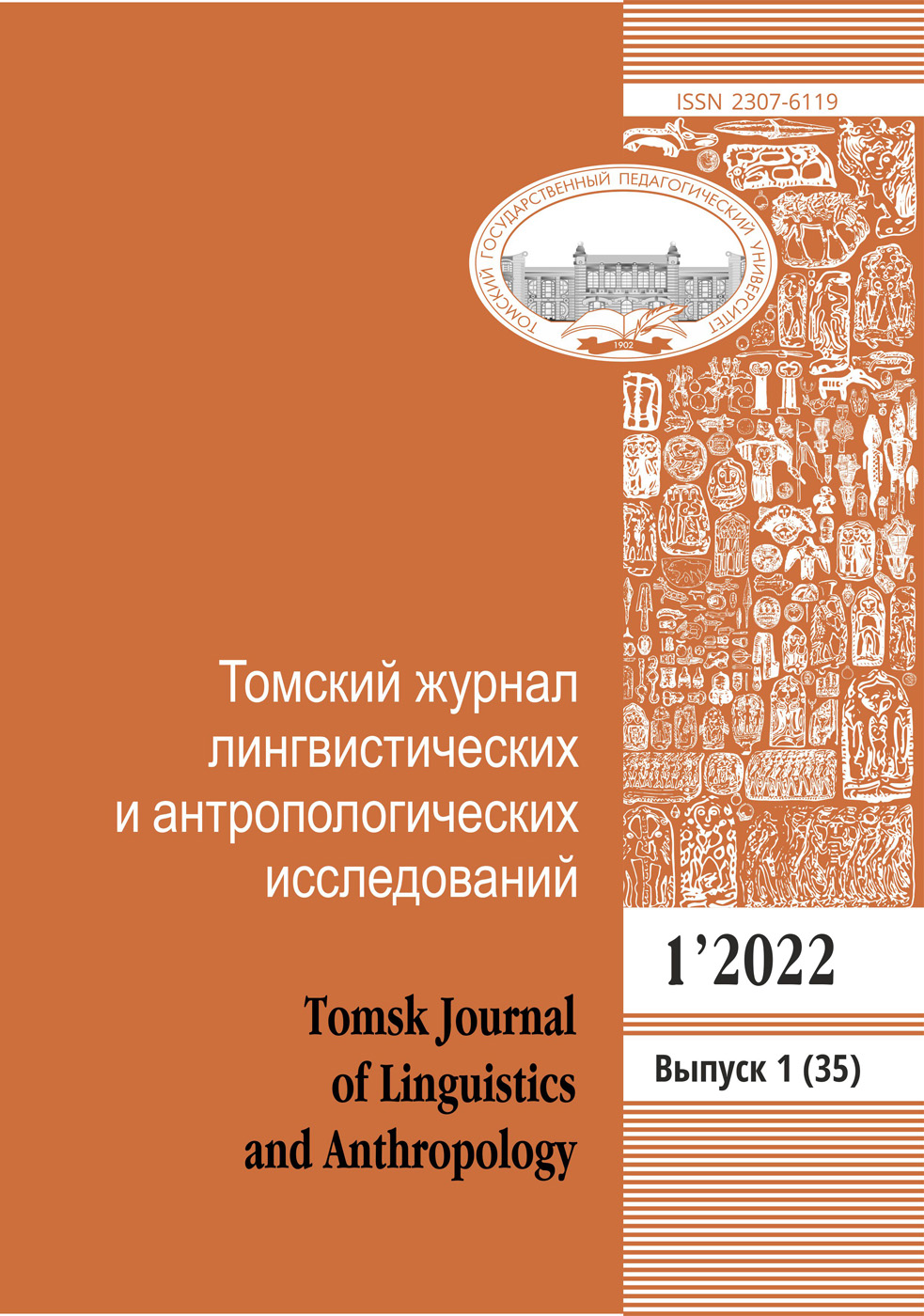SEMANTIC AND SYNTACTICAL SPECIFITY OF COHESION IN ELECTRONIC LITERARY TEXTS
DOI: 10.23951/1609-624X-2018-4-96-101
The paper deals with the key aspects of electronic literary text semiotics and the specific realization of its categories such as cohesion and coherence. The research materials include several electronic texts (based on different platforms and technologies such as Adobe Flash, Scalar, HTML 5) that demonstrate the use of conceptually valid poly-code elements in their semantic structure. The main methods of the research are general scientific methods such as monitoring and description in conjunction with the method of comparative analysis and complex linguistic and stylistic analysis of literary text. The basis of text formation logical and semantic connections is the repetition of information in the various parts of the text. The cohesion of electronic literary text structural elements is provided by micro and macro thematic correlation of nonverbal components that relate to repeated verbal elements of electronic literary text. Being semantic valid, nonverbal components (audio, video, graphics, animation) can correlate with the differ character and length verbal components (letter; word/ word combination/ phrase; a part of text: the whole text) of electronic literary text. The spatial arrangement of verbal and nonverbal elements of electronic literary text is a means of expressing thematic and conceptual structure of the electronic work. Electronic literary text coherence comes along in the recipient’s consciousness during the cognitive process which helps to build holistic meaning transferring with the help of verbal and nonverbal elements of electronic work. Electronic literary text is semiotic complex object of modern informational and communicational discourse where verbal code is still meaningful but not predominant element. This fact transfers the text materiality into the sphere of cross disciplinary research in the humanities.
Keywords: Electronic literary text, verbal, nonverbal, coherence, cohesion, polycode
References:
1. Akhrenova N. A. Internet-dikurs kak global’noye mezkul’turnoye yavleniye i ego yazykovoye oformleniye. Avtoref. dis. dokt. filol. nauk [Internetdiscourse as global intercultural phenomenon and its language interpretation. Abstract of thesis doct. of philol. sci.]. Moscow, 2009, 36 p. (in Russian).
2. Vashunina I. V. Vzaimovliyaniye verbal’nykh i neverbal’nykh (ikonicheskikh) sostavlyaushchikh pri vospriyatii kreolizovannogo texta. Dis. dokt. filol. nauk [Mutual influence of verbal and nonverbal elements during kreolized text perception. Diss. doct. of philol. sci.]. Moscow, 2009, 511 p. (in Russian).
3. Galichkina E. N. Komp’yuternaya kommunikatsiya: lingvisticheskiy status, znakovye sredstva, zhanrovoye prostranstvo [Computer communication: linguistic status, language resources, genres]. Volgograd, Paradigma Publ., 2012. 322 p. (in Russian).
4. Dedova O. V. Lingvisticheskaya kontseptsia giperteksta: osnovniye ponyatiya i terminologicheskaya paradigma [Linguistic concept of hypertext: main notions and terminological paradigm]. Vestnik Moscow University. Seriya 9. Filologiya – Moscow State University Bulletin. Series 9. Philology, 2001, pp. 22–36 (in Russian).
5. Sonin A. G. Modelirovaniye mekhanizmov ponimaniya polikodovykh tekstov. Dis. dokt. filol. nauk [Polycode text understanding modelling. Diss. doct. of philol. sci.]. Moscow, 2006, 323 p. (in Russian).
6. Hayles K. N. Electronic Literature: What Is It? URL: http://eliterature.org/pad/elp.html (accessed 10 February 2018).
7. Manovich L. The language of new media. Cambridge, Massachusetts, MIT Press, 2001. 307 p.
8. Murray J. H. Hamlet on the Holodeck: the Future of Narrative in Cyberspace. Cambridge, Massachusetts, MIT Press, 1998. 440 p.
9. Rosario D. G. Electronic Poetry. Understanding Poetry in the Digital Environment. Jyväskylä, Jyväskylä University Printing House, 2011. 336 p.
10. Ryan M-L. Narrative as Virtual Reality. Baltimore and London, The Johns Hopkins University Press, 2001. 416 p.
11. Wardrip-Fruin N. Five elements of digital literature. URL: https://games.soe.ucsc.edu/sites/default/files/nwf-BC5-FiveElementsOfDigitalLiterature.pdf (accessed 10 February 2018).
12. Makarov M. L. Yazykovoye obshcheniye v maloy gruppe: opyt interpretativnogo analiza diskursa. Dis. dokt. filol. nauk [Language communication in a small group: an interpretive analysis. Diss. doct. of philol. sci.]. Tver, 1998, 443 p. (in Russian).
13. Filippov K. A. Lingvistika teksta [Linguistics of text]. Saint Petersburg, Saint Peterb. University Publ, 2003, 336 p. (in Russian).
14. Tatarintsev В. Flyuger [Weather vane] (in Russian). URL: http://www.netslova.ru/tatarintsev/wc1.htm (accessed 10 February 2018).
15. Giełżyńska K., Małecka A. Conduit. Electronic Literature Collection, ed. by S. Boluk, L. Flores, J. Garbe, A. Salter. Cambridge, Massachusetts, 2016. URL: http://collection.eliterature.org/3/work.html?work=conduit (accessed 10 February 2018).
16. Smol’nyy V., Khasin G., Aleksroma. Limericheskaya karta mira [Limerical world map] (in Russian). URL: http://www.netslova.ru/alexroma/limer.html (accessed 10 February 2018).
17. Marseille A., Baeke J. Channel of the North. Electronic Literature Collection, ed. by S. Boluk, L. Flores, J. Garbe, A. Salter. Cambridge, Massachusetts, 2016. URL: http://collection.eliterature.org/3/work.html?work=channel-of-the-north4 (accessed 10 February 2018).
18. Bol’shakova L. S. Kognitivnyy mekhanizm sozdaniya vizual’noy metafory (na materiale angloyazychnykh videoklipov) [Сognitive mechanism visual metaphor creation (on the basis of English music video]. Sovremennye problemy nauki i obrazovaniya – Modern problems of science and education, 2008, no. 2 (in Russian). URL: https://science-education.ru/ru/article/view?id=703 (accessed 10 February 2018).
Issue: 4, 2018
Series of issue: Issue 4
Rubric: COMPARATIVE STUDIES
Pages: 96 — 101
Downloads: 820





